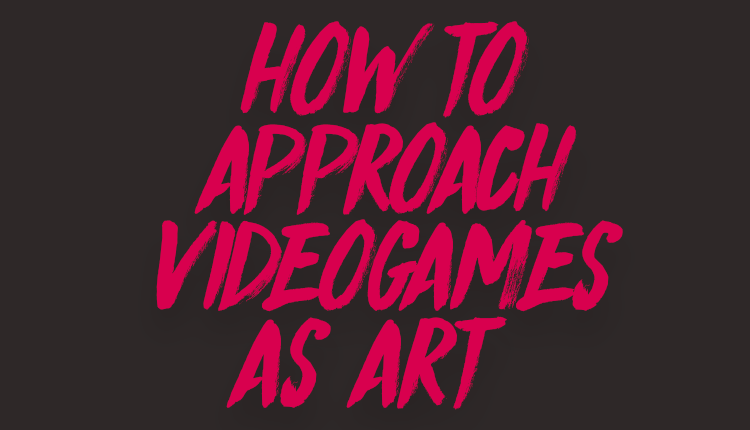Okay, this first entry into “Challenging Assumptions: On Art and Videogames” is going to rely heavily on John Sharp’s ideas, as he uses his introduction to lay out a thick serving of concepts on which the rest of the book relies. He describes his experience playing The Night Journey in the Museum of the Moving Image to highlight the different expectations people bring to a work when they’re from different communities, in this case contemporary art enthusiasts or gamers.
Sharp explains that while museum goers found The Night Journey to be reflective and spiritual, gamers lauded it for defying gameplay tropes. The praise from the two camps underlines the game’s ability to “synthesize the conventions of both contemporary artistic practice and games,” while also showing that both can be satisfied without knowledge of the other.

The concept of affordances is the key to understanding the two different responses above. Sharp draws from James Gibson’s 1977 essay “The Theory of Affordances” to define them as “the qualities of an object that suggest its use.” He uses the example of a screwdriver. Its handle suggests gripping and its tip suggests insertion to a corresponding shape. Here, “the ‘screwdriverness’ of the object communicates” to us what it can do.
Breaking affordances into three categories can further help us understand “expectations a community brings to the evaluation of what one can and cannot do with a cultural form.”
(By the way, I find the word culture to be as nebulous as art, and as flippantly used. At this point I’m expecting a definition from Sharp, but he has yet to provide one.)
Conceptual affordances dictate a given community’s opinion on the possible purposes of an artifact. Sharp uses the examples of paintings in Europe from the 13th through the 19th century. During this time, paintings’ conceptual affordance was the realistic representation of the real world. This was employed to instruct the viewer, entertain, propagate, or tell a story. Ultimately, the conceptual affordances are “the assumptions about what one can and cannot do when creating an artifact of that type.”

Formal affordances of an artifact delineate the materials that can and cannot be used to create it. This consists of what tools are required, what the object is made of, and which techniques are necessary in creation. These formal components “are the grammar and idiom of the form.” Sticking with paintings, Sharp breaks down the formal affordances as a panel or canvas, pigment, and brushes. Moreover, he includes compositional qualities like color, line, shape and texture.
These formal qualities directly relate to the work’s intended purpose. Religious paintings that provide instruction “should take an appropriate material form…[like using] a large panel to hang above an altar where it can be” seen clearly. The painting should emphasize the story by using its composition to guide the eye . Lastly, the “persons, objects, and locations should be represented… in ways that make the lesson clearer.”
Conceptual and formal affordances work in tandem, “as formal affordances are heavily framed by the expectations embedded in what the community conceives as the use of the cultural form.”
The final permutation, experiential affordances, are the experiences a community expects to have through contact with the artifact. Sharp takes time to draw attention to their close connection to conceptual affordances. Rounding out his example of paintings, in the most basic terms, to experience a painting is to see an image: an act of viewing. Additionally, the context, or where the image is presented, also drastically affects one’s experience with it.

(So in relation to videogames, the experiential affordance is to PLAY them. This statement is so important, and absolutely crucial to understanding my approach to game discussion. As simple as it sounds, I’m always surprised with how little play is analyzed in critical evaluation of games.)
To wrap this section up, we see now how the three affordances in concert “provide a framework for thinking about how communities of practice approach a cultural form.” To see these affordances in action when applied to a game, Sharp discusses chess. Game makers and players hold reverence for its elegant balance and potential for competition, while artists see a space where “artistic interventions” can interact, leaving play as a secondary.
So what the hell are videogames’ affordances? How can they differ even inside the gaming industry as whole? How do they change when even more niche subgroups approach them?
All ideas in this article were pulled from Works of Game: On Aesthetics of Game and Art. More specifically, the introductory chapter. Sections that are italicized are my own direct commentary.
Edited By Malia Hamilton
Originally published on OK Beast
